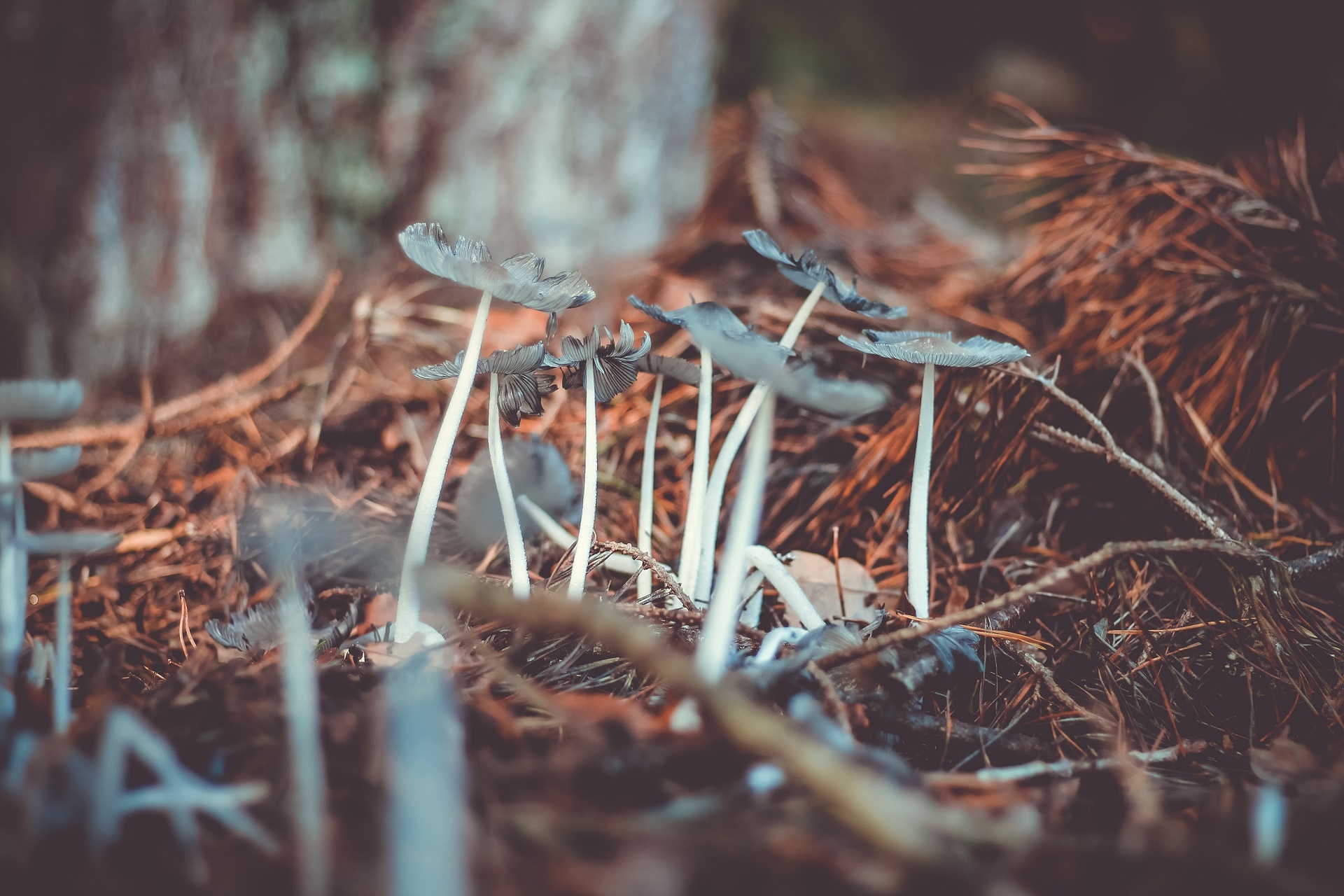Last week I went foraging for chaga with my friends Cameron and Janie, in a a forest on the property of a friend of theirs in southwest Virginia. Birch trees tend to grow well here in the higher elevations, and Chaga is most commonly found on birch.
Chaga is a medicinal “mushroom” that seems to be trendy among the nutraceutical and wellness crowds here in the US, though it has been used for some time as a medicinal in Russian, northern European, and Asian cultures.
Chaga grows as a mutualist fungus on the bark of birch trees. Chaga mycelia colonize wounds on birch trees and form a protective scar tissue, which manifests as large, black burls on the otherwise gray tree bark. These burls are easiest to spot and best to harvest during the late winter before sap begins to flow.
To harvest chaga, we used a hatchet to dislodge the outer black fungal sclerotium along with some of the underlying woody/fungal mass, usually orange or yellow, being careful to leave at least 20% so the chaga will regrow. After a few hours we had harvested a severak pounds and decided to call it a day.
Over the course of the next week, Cameron and Janie dried and ground the chaga to a powder of roughly the consistency of instant coffee and the color of hot chocloate mix, providing me with a quart jar full of powder with which to make tea.
My first experience actually consuming chaga was last summer, when I tried it in an iced coffee beverage, Gnomebrew, a delicious collaboration between my other foraging friends Matthew and Jenna and a local coffee roaster. I had never tasted pure chaga tea before, so was a little unsure what to expect.
Chaga, unlike other mushroom teas I’ve tried, is actually rather palatable on its own. Prepared from the ground-up powder in a water extraction by slow cooking it for about six hours, it has a flavor that hints of cinammon, vanilla, and cocoa, and is not unlike an ersatz coffee.
Afficionados claim that chaga’s medicinal benefits range from anti-inflammatory and anti-tumor properties to immune system regulation, liver protection, and that it also helps control high blood pressure and cholesterol.
Aleksandr Solzenitsyn, in his novel Cancer Ward, made reference to the healing power of Chaga vis-a-vis its use as a traditional Russian folk remedy: “He could not imagine any greater joy than to go away into the wood for months on end, to break off this chaga, crumble it, boil it up on a campfire, drink it and get well like an animal.”
While there is anecdotal evidence from folk medicine and ethnobotanical research as well as numerous in vitro and animal studies regarding chaga’s potential efficacy in treating a host of conditions, clinical studies are currently lacking. Most evidence seems to suggest that there is little potential harm from using chaga in moderation as a tea or a tincture.
I can report from my own experiences of having enjoyed a cup of chaga tea every day or so for the last few days that it definitely provides a subtle yet noticeable energy boost, similar to drinking yerba mate or green tea.
